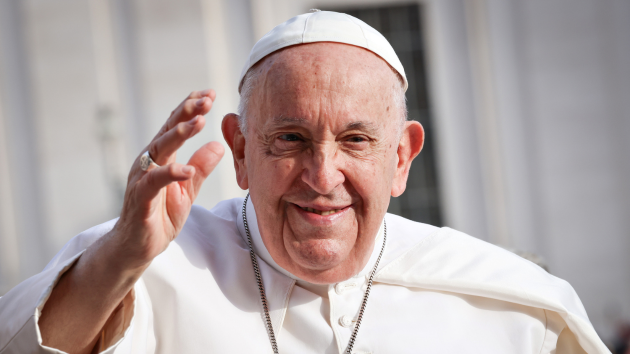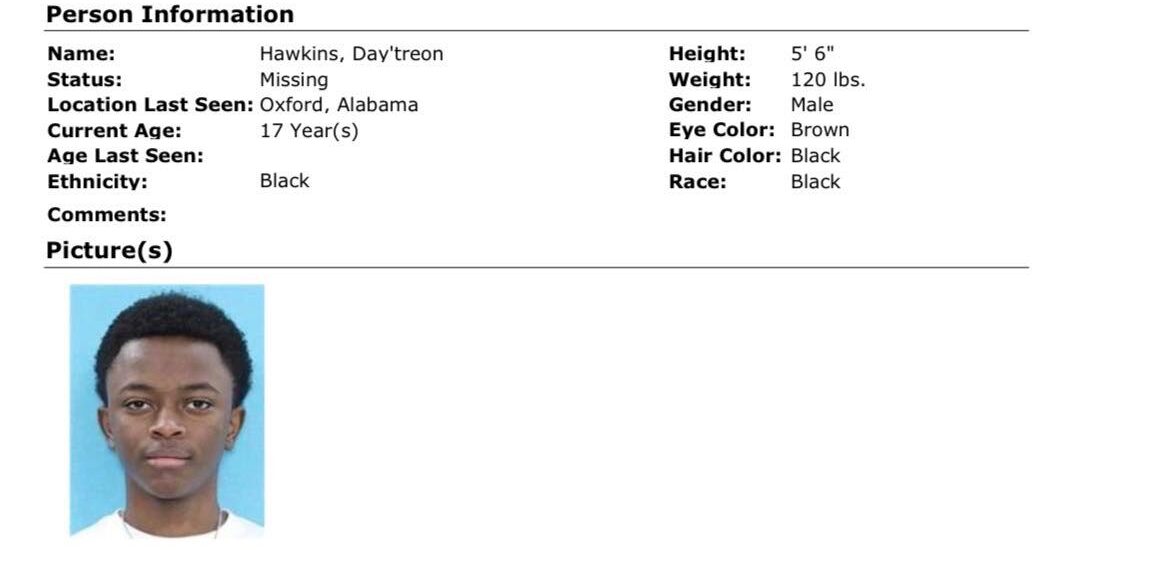
(VATICAN CITY) — Pope Francis, whose time as head of the Catholic Church was noted for an everyman humility and outreach efforts to people of disparate backgrounds and faiths, has died at 88, the Vatican has confirmed.
“At 7:35 this morning, the Bishop of Rome, Francis, returned to the house of the Father. His entire life was dedicated to the service of the Lord and His Church,” Cardinal Kevin Farrell said on Monday.
Pope Francis was hospitalized for just over five weeks beginning in February 2025 to address what the Vatican initially said was a respiratory tract infection, for which he began receiving treatment. Four days after his hospitalization, the Vatican revealed that Francis had been diagnosed with bilateral pneumonia.
The pontiff’s health remained precarious in the ensuing weeks, including a “prolonged” asthmatic respiratory crisis that the Vatican said required doctors to administer him supplemental oxygen, as well as transfusions to address low blood platelets, which are cells that circulate in the blood and help it clot. He also experienced two episodes of “acute respiratory failure” in early March, according to the Vatican, that required “noninvasive mechanical ventilation” at night to help him breathe.
Pope Francis was released from the hospital and returned to the Vatican on March 23, where his physicians said he would require additional months of recovery. Two weeks later, he made his first public appearance since his discharge from the hospital, sitting in a wheelchair while using supplemental oxygen as he briefly greeted people in St. Peter’s Square. He also made an appearance on Easter Sunday from the balcony of St. Peter’s Basilica, following a earlier meeting with Vice President JD Vance.
Pope Francis was said to be alert and aware throughout the health episodes and occasionally posted messages on X, acknowledging the good wishes sent his way.
“I would like to thank you for your prayers, which rise up to the Lord from the hearts of so many faithful from many parts of the world,” Francis posted on March 2. “I feel all your affection and closeness and, at this particular time, I feel as if I am ‘carried’ and supported by all God’s people.”
Four days later, the pope offered his first public comments since his hospitalization in the form of a recorded audio message in Spanish that was played in St. Peter’s Square.
“I thank you from the bottom of my heart for your prayers for my health from the Square, I accompany you from here,” the pope said. “May God bless you and the Virgin protect you. Thank you,”
Pope Francis’ respiratory health was a lifelong issue for him; he had part of one lung removed at age 21 because of a respiratory infection. As he grew older, he began to experience gastrointestinal issues that led to a section of his colon being surgically removed in 2021 because of intestinal inflammation. He also began using a wheelchair and cane in 2023 because of strained knee ligaments and a small knee fracture that made walking and standing difficult.
As the leader of the Catholic Church, Francis captured the imaginations of believers and non-believers alike, with his populist style giving the church’s message of social justice far greater resonance than that of many of his predecessors.
Argentinian-born Jorge Mario Bergoglio became the Catholic Church’s 266th pope and the first ever from Latin America. He took the name Francis after the well-known St. Francis of Assisi, who ministered to the poor.
Like his namesake, the pontiff earned a reputation for living a humble life and eschewing the pomp of his predecessors. While Pope Benedict XVI had a flair for papal fashion, Francis chose the simple white cassock with few embellishments for everyday wear. When he was elected pope on March 13, 2013, he didn’t send an aide to pay his hotel bill in Rome, but took care of it himself.
He was also arguably more approachable than his predecessors, known to pose with tourists for selfies and for allowing children join him on the popemobile during his weekly public audience in the square. He once welcomed a child with Down syndrome to sit next to him, and held her hand while he delivered a speech.
Francis also chose not to live in the ornate papal apartments, preferring instead to reside with others in the simple quarters of the Vatican guest house. Rather than travel in a limousine, he made a point of traveling about in smaller, more ordinary vehicles when leaving the Vatican and on his trips.
He reached out to those on the margins of society, and to Catholics who felt alienated by church doctrine.
First Latin American pope
Jorge Mario Bergoglio was born on Dec. 17, 1936, in Buenos Aires, Argentina, one of five siblings. His father was an Italian immigrant employed as a railway worker, while his mother was the Argentine-born daughter of Italian immigrants.
Stricken with a lung infection as a teenager, Bergoglio ultimately had part of his right lung removed at age 21. He went on to hold various odd jobs, including working as a bouncer at a club, sweeping floors, and running tests in a chemical laboratory, before deciding to join the Jesuit order in 1958, becoming a priest just shy of 12 years later.
The same sense of social justice he embodied as Pope Francis can be traced back to when the pontiff was the archbishop of Buenos Aires. He made a name for himself then by reportedly leading a simple life – preparing his own meals, living in a spartan apartment and riding public transportation – eschewing the luxurious lifestyle typically associated with his position.
As archbishop of Buenos Aires, Francis in 2012 notably criticized priests who refused to baptize children born out of wedlock.
“They are the hypocrites of today,” said Francis. “They turn God’s people away from salvation. And that poor girl who could have sent her child back to the sender but had the courage to bring him into the world goes on pilgrimage from parish to parish to have him baptized.”
Outreach as pope
From the start, Pope Francis’ tenure was marked by a more populist ministry than that of his predecessors, demonstrated both by his outreach to groups traditionally ignored or criticized by the church, and his broader efforts to reform and contemporize the church itself.
On his first trip after becoming pope, Francis chose symbolically to travel to the tiny Italian island of Lampedusa, in southern Italy, one of the first points of entry into Europe for poor and desperate refugees and migrants from North Africa, who risk their lives to make the crossing in often unsafe vessels. He also used his first Christmas address as pontiff to call on people to “place ourselves at the service of the poor, make ourselves small and poor with them.”
In a February 2016 mass delivered on the U.S.-Mexico border, and with anti-immigrant sentiments on the rise, the pope called for people in the U.S. and around the world to keep “open hearts” regarding immigrants fleeing violence and poverty in their homelands.
With the church under broadside criticism for sex-abuse scandals involving prominent clergy, Pope Francis both met with and apologized to sex abuse victims, calling them “heralds of mercy” and acknowledging that the church had failed them, declaring, “God weeps.”
Francis also criticized the church itself for what he called its obsession with issues including same-sex marriage, abortion and contraception, although he stopped short of challenging the church’s traditional positions on them.
When a journalist asked him a question about gay priests on his first foreign trip in 2013, just four months after his election, Francis stunned people with his response: “If a person is gay and seeks God and has good will, who am I to judge?”
As recently as August of 2023, Francis reiterated in comments during World Youth Day in Portugal that the Catholic Church is for “everyone,” including LGBTQ+ people, although they were still excluded from the sacraments. The following December, Francis approved a Vatican declaration titled “On the Pastoral Meaning of Blessings” which noted that, while the church’s official policy remained opposed to same-sex marriage, “when people ask for a blessing, an exhaustive moral analysis should not be placed as a precondition for conferring it. For, those seeking a blessing should not be required to have prior moral perfection.”
Health problems
Pope Francis’ respiratory health was a lifelong issue for him; he had part of one lung removed at age 21 because of a respiratory infection. As he grew older, he began to experience gastrointestinal issues, including a bout of diverticulitis that led to a 10-day hospital stay in July 2021, during which time a section of his colon was surgically removed. He also began using a wheelchair and cane in 2023 because of strained knee ligaments and a knee fracture that made walking and standing difficult.
On a flight home from a trip to Canada in July 2022, where he had been using a wheelchair, Francis hinted he would have to slow down future travels and maybe resign one day.
“This trip was a bit of a test. It’s true you can’t do trips in this state, maybe we have to change a bit the style, reduce, pay the debts of the trips that I still have to do and reorganize,” Francis said.
He added that “the door is open” for him to resign if he couldn’t carry on.
Even so, Francis continued traveling in 2023, with a total of five trips that year despite increasing health issues.
In January of 2023, then-86-year-old Pope Francis revealed his diverticulitis had returned but was being managed. The following March, he was hospitalized for three days with acute bronchitis.
“I am touched by the many messages received in these hours and I express my gratitude for the closeness and prayer,” Francis wrote on Twitter at the time.
In June of 2023, Francis was back in the hospital, where he underwent three hours of abdominal surgery to address intestinal blockages caused by scarring from previous surgeries. That following November, the Vatican announced that the pontiff had developed a “pulmonary inflammation that has caused some breathing difficulties,” and for which he was being treated with intravenous antibiotics. He subsequently canceled a planned trip to attend a climate conference in Dubai.
Pope Francis’ health continued to be an issue into 2024, prompting the cancellation of some events in late February of that year due to what the Vatican press office described as “mild flu symptoms,” which also saw him visit Rome’s Gemelli Hospital for what the Vatican called “diagnostic tests.”
In January 2025, the Vatican announced that Francis had injured his arm in a fall at his residence, suffering “a bruise to his right forearm, without fractures.” The Pope was seen using a soft sling to support his arm in a photograph released by the Vatican.
Pope Francis continued to experience respiratory issues and was admitted to the hospital on Feb. 14, 2025 for what the Vatican described as “necessary tests” and was subsequently diagnosed with a respiratory tract infection, also according to the Vatican, for which he began receiving treatment. Four days later, the Vatican revealed that Francis had been diagnosed with bilateral pneumonia, for which he was receiving “additional drug therapy.”
“Thank you for the affection, prayer and closeness with which you are accompanying me in these days,” the pope posted on X on Feb. 16.
Pope Francis subsequently suffered a “prolonged” asthmatic respiratory crisis on Feb. 22, according to the Vatican, that required doctors to administer him supplemental oxygen, and that he remained in critical condition. Francis had also received transfusions to address low blood platelets, the Vatican said.
What happens next
A nine-day period of mourning is expected to be observed. The Pope’s funeral will be held after his body lies in state for public viewing in St. Peter’s Basilica.
During this time, all cardinals under the age of 80 who are eligible to participate are summoned to Rome to prepare for the secret conclave inside the Sistine Chapel to choose the next pontiff, a gathering that typically commences between 15 to 20 days after the pope’s death.
The cardinal-electors will cast as many as four ballots in a single day. Black smoke from the Sistine Chapel’s chimney will indicate an inconclusive vote, while white smoke will signify a new pope has been elected.
The new man chosen to lead the Catholic Church will then prepare to make his public debut at the central balcony at St. Peter’s Basilica.
ABC News’ Christopher Watson contributed to this report.
Copyright © 2025, ABC Audio. All rights reserved.




